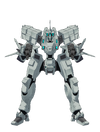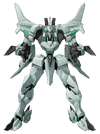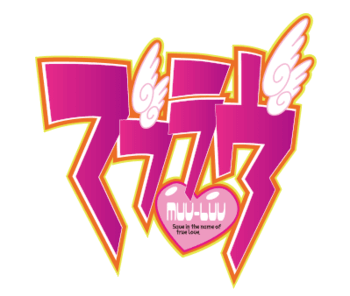Canada is a federal parliamentary democracy underneath a constitutional monarchy in North America. They share a close bond through their colonial roots with both the United Kingdom and France, as well as a complex relationship with their southern neighbor, the United States of America. The country plays a minor role in Alternative but plays a more driving role in The Day After universe of Alternative Chronicles where it serves as a major antagonist, along with their French allies.
History[]
Canada came into the world's spotlight when in 1974 it was the target of a second BETA landing unit that crashed inside the district of Athabasca, in Saskatchewan province. Before the Canadian military or the United Nations could properly formulate a defensive strategy, the United States of America engaged the alien invaders with copious amounts of nuclear weaponry which in turn caused untold devastation across the western half of Canada that has been rendered largely uninhabitable until the current day.
This in turn greatly stressed the relationship Canada shared with the US, and resulted in greatly influencing the Canadian government's future policy of non-reliance on the US and the strengthening of ties with their Eurasian allies. Canada today is home to many European refugees and governments-in-exile from the war-stricken continent and, despite it's relative safety from the conflict, maintains a fully active military and continues to contribute to the war effort with both economic support and manpower through their United Nation deployments.
Canada's participation in the United Nations takes place at all levels: political, economic, and military support include the country's contributions. When the UN called for new plans to replace the failing Alternative III, Canada was a member state that put forth a bid to host the next project along with Australia and Japan. Later, they became staunch supporters of the Alternative IV plan and are opposed to US-backed efforts of the deployment of G-Bombs and the activation of Alternative V.
The Day After[]
In Muv-Luv Unlimited The Day After timeline, Canada's importance grows due to the activation of Alternative V and the sinking of the Eurasian and African continents. Already hosting many governments-in-exile, much of the surviving European Union's deployed military force returned to Canada in the aftermath of Operation Babylon along with great swathes of refugees from Africa and the British Isles.
Canada had already been struggling to maintain their current population, and the country quickly became overburdened as the effects of The Day continued to be felt on the continent. The climate continued to shift and parts of the atmosphere literally evaporated, creating chaos and straining what precious arable land remained to provide for the country. The United States turned their backs on Canada as they dealt with their own share of problems not unlike those of Canada, with large portions of the Midwest, Southwest, and East Coast lost to salt plain wastelands and deprived of breathable air, and their obligation to take in refugees from Asia.
In the midst of the crisis, the 6th French Republic was organized through influential military and right-wing political officials. From their headquarters in Quebec, the French held a unique strategic position where most of their military assets, including TSFs and military personnel, survived the events of The Day in comparison to much of the rest of the European Union and the decimated United Nations. Using this influence, the French convinced the Canadian government to join them in a close alliance that allowed them to dominate and integrate the remaining governments into their organization through coercion by force.
By the end of 2004, the Canadian-French alliance was faced with the threat of mass famine and starvation. With tensions already high with the US and Japan over past transgressions, the alliance quickly moved to go to war and began a series of skirmishes along the Northeast of the United States with the last one being coined the 8th Border War. During this conflict, French forces managed to push all the way to the mostly abandoned state of Maryland and the White House. With a lack of breathable air, the ground forces that secured the District of Columbia were forced to wear atmospheric suits not unsimilar to astronauts.
These offensives, while technically they were successful in pushing the United States back, were strategically useless as much of the land fought over was nothing but wasteland and was only lightly guarded by the US and her Japanese allies. To this end, a French commander by the name of Lea Gegranne proposed an operation to assault and capture NORAD, the only facility left in North America that could make contact with the orbiting SHADOW command satellite. On board this satellite was a sympathizer to the cause that, unbeknownst to the American radio operators in Colorado, had successfully taken command of the nuclear weapon arsenal and was ready to use it against the United States. The plan was approved, and Canada provided both manpower and logistics support to the French-led operation that would coincide with a proposed Four Country Conference: an event that sought to stabilize the relationship between the remaining four countries of humanity. It was organized after the discovery of BETA in the southern salt plains, at the wreckage of the USN Carrier John F. Kennedy.
The NORAD capture operation had initial success in that the facility was taken over with few casualties on either side, as the Americans were taken by surprise considering how deep Colorado was in their territory on the west coast and the difficulty of traversing the zero-atmosphere wasteland much of the Midwest and Southwest US encompassed. A swift counterattack was launched by the US and Japan, but the Canadian and French alliance made good on their threat and launched a nuclear missile against the attacking force as the two sides skirmished with one another. While the nuclear weapon did temporarily scatter the two forces, the United States and Japan organized quickly thanks to their pre-arranged battle plan and launched a vicious attack against the French and Canadian forces who were still scattered and disorganized.
Despite the efforts of the Canadians and French, the US and Japanese were able to retake NORAD and inflict heavy casualties against the retreating French and Canadian forces thanks in large part to the participation of the Imperial Royal Guard of Japan. French efforts to launch a second nuclear payload failed thanks to the work of a United Nations Orbital Diver operator, Rina Tervo, and her successful infiltration and takeover of the satellite. Given this delay, American and Japanese special forces were able to swiftly retake the command facilities and prevent any significant equipment sabotage from occurring.
The French and Canadian governments quickly backpedaled on their involvement with the NORAD operation after their negotiators received word of the operation's failure. Lea Gegranne was labelled a traitor to the state, despite being heavily revered by the population she stood up for, and an agreement was made to extradite her to US and Interpol authorities as part of a sweeping agreement to form the New United Nations underneath the COSMOPOLITAN plan of uniting the remaining four nations on Earth.
Under this new organization, the Canadian Armed Forces joined with the United States, Japan, and France in a joint operation to infiltrate and destroy the JFK Hive. The resounding success of the operation brought unity among of the members of the combined armed forces who only a few days prior were once fighting against each other. However, there are fears that Canadian and French authority has weakened considerably under the new organization and, given their reliance on the Japanese synthetic food plant technology, the two governments are not in an ideal position to resist the demands of the United States.
Organization[]
In the aftermath of the Statute of Westminster in 1931, Canada was granted almost complete independence from the United Kingdom. Despite this, Canada remains a member of the Commonwealth of States and holds strong ties with its European allies. The country is divided into ten provinces and three territories encompassing almost the entire northern half of the North American continent, however, almost half of the western portion of Canada remains hazardous to human settlement due to the Athabasca incident in 1974.
Despite its strained relationship with the United States, Canada remains a member of NATO (North Atlantic Treaty Organization) and maintains other key economic and military ties with the superpower. However, they are also a member of the United Nations and through the organization continue to contribute indirectly to the war effort with manpower and funds.
North American Aerospace Defense Command (NORAD)[]
A combined organization between the United States and Canada that was originally used for aerospace warning and defense that aimed to prevent a Soviet attack on North America. After hostile contact was made with the BETA in 1967, NORAD's attention quickly focused on the observation, detection, and elimination of potential BETA landing units aimed at North America.
After observing the Kashgar landing of 1973, NORAD considered first strike capabilities the highest priority in protecting United States and Canadian soil from invasion. This was put into practice in 1974 when the BETA landed in Athabasca and the United States, forewarned by NORAD's detection devices, had moved its armed forces into a position of readiness and deployed nuclear weapons en masse against the aliens.
Later, after the proposal and subsequent creation of the SHADOW satellite defense system, NORAD took over the responsibility of staffing and managing the space defense grid.
Canada's continued co-management of NORAD is unknown in Alternative, but it is likely the two countries remain in the partnership due to the mutual benefit of security.
In The Day After, at an unspecified time NORAD's compliment of Canadian management was removed in the midst of rising tensions between the two nations after Operation Babylon. This did not include staff aboard the SHADOW command satellite, however, due to the lack of available orbital transport. The Canadian and French alliance were able to take command of the system during their takeover of NORAD thanks to one such sympathizer already on the satellite.
Armed Forces[]
Through the National Defense Act of 1922, Canada has the express permission to both fund and maintain a standing military for the protection of their borders as well as for the purpose of being deployed abroad at the behest of the Commander in Chief of the Canadian Armed Forces. Because of their status as a Commonwealth state, their sovereign head of state and commander in chief is the King or Queen of the United Kingdom, but the authority of the position is officially bestowed upon the Governor General of Canada.
A reorganization of the military in 1968 brought all three branches under the single organization of the Canadian Armed Forces, with the Canadian Army becoming Land Force Command (LFC); the Royal Canadian Air Force becoming Air Command (AIRCOM); and the Royal Canadian Navy becoming Maritime Command (MARCOM).
Land Force Command (LFC)[]
Land Force Command was originally made up of five divisions with each supported by additional reserve units. The 1st division acted as the Command and Control group, whereas the other four were divided by their areas of responsibility within Canada. In the aftermath of the Athabasca incident, the 3rd Canadian Division in charge of the Western area was presumably folded into the remaining four divisions.
In addition to TSFs, Canada maintains various infantry and mechanized brigades. Their primary tank is the Leopard.
Canadian TSFs are recognizable due to their distinct gray-green tinge of their TSF's armor chassis.

F-5E, used as the mainline TSF of the LFC.
In Alternative, the Canadian LFC was never seen and so only assumptions can be made of their organizational structure and TSF deployments. Given their relationship to the UK and the EU as well as their presence in The Day After, the Canadian Army most likely fielded Tornado F-5E TSFs as both a frontline fighter and fire support platform. Given that Canada was not under immediate threat the outdated TSFs most likely made up the bulk of their armory, and the LFC was in little rush to acquire 3rd generation craft that many of the other frontline nations were hurrying to build and deploy.
Given their proximity and military ties, Canada also fields a local variant of the F-18A Hornet purchased originally from the United States[1]. These TSFs were Canada's top-of-the-line unit as a 2nd generation craft.
Canada was in talks with the United States to potentially purchase the F-35 Lightning II, a technically scaled down lightweight production model of the F-22A Raptor, but there is also competition in the form of France's Dass-Ault to market the Rafale to Canada.

Rafale, Canadian variant. 2005, TDA.
Considering the state of the world in the year of 2004, Canada's military has both remained largely the same in organization but has had its armory heavily influenced by its French counterpart. After forming an alliance with the 6th French Republic, Canada began to field the 3rd generation Rafale in its own unique variant, painted a gray-green to differentiate it from France's light purple color scheme.
They continued to use the F-5E heavily as a support platform where it acted as the lightweight counterpart to the Rafale in the "Hi-Lo" tactical doctrine concept.Air Command (AIRCOM)[]
Air Command once acted as the Canadian military's only arm in the sky, but that role has largely been shifted to the LFC. The organization is divided into two divisions, with 1st division including all of the military wings stationed in Canada and the 2nd division which acts as a dedicated training group.
Whether Air Command remains intact as its own organization, or if it was deactivated similar to many other nations is unknown. However, considering the large fleet of transport craft they operate and Canada's strategic position in North America, it is likely AIRCOM remains in existence in some form to facilitate the efficient transport of supplies and TSFs; It may cooperate with the USAF in this regard.
Maritime Command (MARCOM)[]
The smallest organization within Canada's armed forces, Maritime Command hosts all of the country's seaborn assets. Aircraft that are used to support MARCOM's assets are principally under the command of AIRCOM rather than the Navy, because of their fleet's small size and lack of adequate support vessels like carriers.
Trivia[]
- Interestingly, despite Canada's strained relationship with the United States in both the Alternative and The Day After universes, Canadian pilots are observed to use standard-issue American fortified suits with only slight aesthetic changes in color. This may be due to the suit being co-designed or produced by the two countries, or it could be that Canada simply had them in surplus supply.
- Canada's TSFs have so far seen to have a light shade of green-gray paint as their color scheme. They share this palette with the United Kingdom, as seen in their EF-2000.
